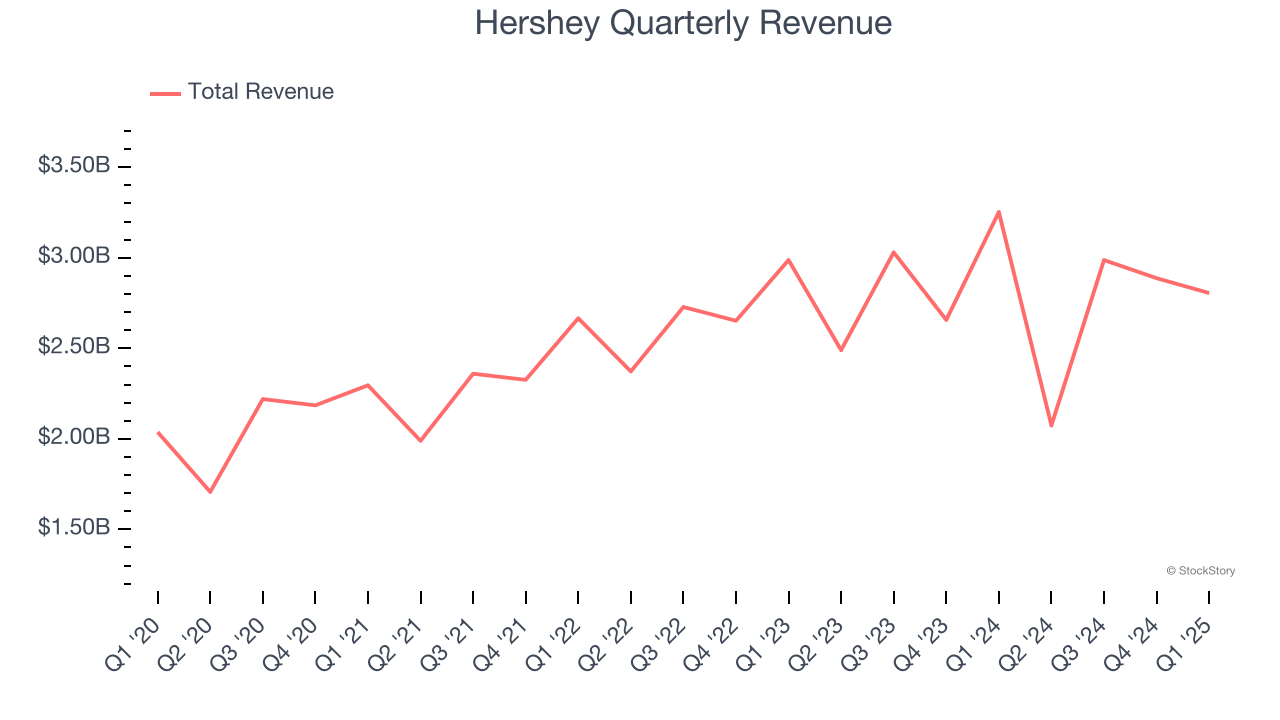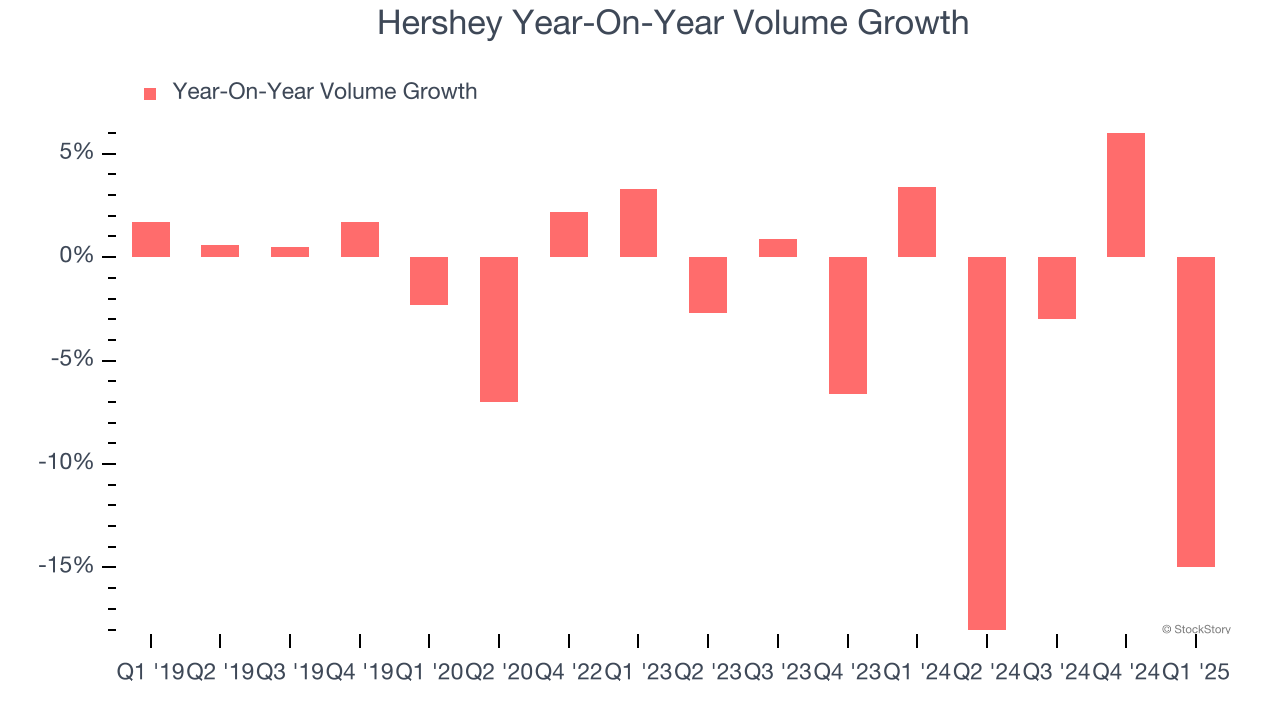
Chocolate company Hershey (NYSE:HSY) met Wall Street’s revenue expectations in Q1 CY2025, but sales fell by 13.8% year on year to $2.81 billion. Its non-GAAP profit of $2.09 per share was 8% above analysts’ consensus estimates.
Is now the time to buy Hershey? Find out by accessing our full research report, it’s free.
Hershey (HSY) Q1 CY2025 Highlights:
- Revenue: $2.81 billion vs analyst estimates of $2.81 billion (13.8% year-on-year decline, in line)
- Adjusted EPS: $2.09 vs analyst estimates of $1.93 (8% beat)
- Adjusted EPS guidance for the full year is $6.09 at the midpoint, roughly in line with what analysts were expecting
- Operating Margin: 13.2%, down from 32.5% in the same quarter last year
- Organic Revenue fell 13.2% year on year (8.6% in the same quarter last year)
- Sales Volumes fell 15% year on year (3.4% in the same quarter last year)
- Market Capitalization: $33.87 billion
"I am pleased with the progress we are making on our key strategic initiatives for the year," said Michele Buck, The Hershey Company President and Chief Executive Officer.
Company Overview
Best known for its milk chocolate bar and Hershey's Kisses, Hershey (NYSE:HSY) is an iconic company known for its chocolate products.
Sales Growth
Reviewing a company’s long-term sales performance reveals insights into its quality. Any business can put up a good quarter or two, but the best consistently grow over the long haul.
With $10.75 billion in revenue over the past 12 months, Hershey is one of the larger consumer staples companies and benefits from a well-known brand that influences purchasing decisions. However, its scale is a double-edged sword because it’s harder to find incremental growth when your existing brands have penetrated most of the market. To accelerate sales, Hershey likely needs to optimize its pricing or lean into new products and international expansion.
As you can see below, Hershey’s sales grew at a tepid 4.8% compounded annual growth rate over the last three years as consumers bought less of its products. We’ll explore what this means in the "Volume Growth" section.

This quarter, Hershey reported a rather uninspiring 13.8% year-on-year revenue decline to $2.81 billion of revenue, in line with Wall Street’s estimates.
Looking ahead, sell-side analysts expect revenue to grow 7.4% over the next 12 months, an acceleration versus the last three years. This projection is above the sector average and suggests its newer products will fuel better top-line performance.
Unless you’ve been living under a rock, it should be obvious by now that generative AI is going to have a huge impact on how large corporations do business. While Nvidia and AMD are trading close to all-time highs, we prefer a lesser-known (but still profitable) stock benefiting from the rise of AI. Click here to access our free report one of our favorites growth stories.
Volume Growth
Revenue growth can be broken down into changes in price and volume (the number of units sold). While both are important, volume is the lifeblood of a successful staples business as there’s a ceiling to what consumers will pay for everyday goods; they can always trade down to non-branded products if the branded versions are too expensive.
To analyze whether Hershey generated its growth (or lack thereof) from changes in price or volume, we can compare its volume growth to its organic revenue growth, which excludes non-fundamental impacts on company financials like mergers and currency fluctuations.
Over the last two years, Hershey’s average quarterly sales volumes have shrunk by 4.4%. This isn’t ideal for a consumer staples company, where demand is typically stable. Luckily, Hershey was able to offset fewer customers purchasing its products by charging higher prices, enabling it to maintain its organic sales. We hope the company can grow its volumes soon, however, as consistent price increases (on top of inflation) aren’t sustainable over the long term unless the business is really really special.

In Hershey’s Q1 2025, sales volumes dropped 15% year on year. This result represents a further deceleration from its historical levels, showing the business is struggling to move its products.
Key Takeaways from Hershey’s Q1 Results
It was encouraging to see Hershey beat analysts’ EPS expectations this quarter on in-line revenue. Full-year EPS guidance also roughly met expectations. Zooming out, we think this was a decent quarter with few surprises. The stock remained flat at $167 immediately after reporting.
Should you buy the stock or not? If you’re making that decision, you should consider the bigger picture of valuation, business qualities, as well as the latest earnings. We cover that in our actionable full research report which you can read here, it’s free.
